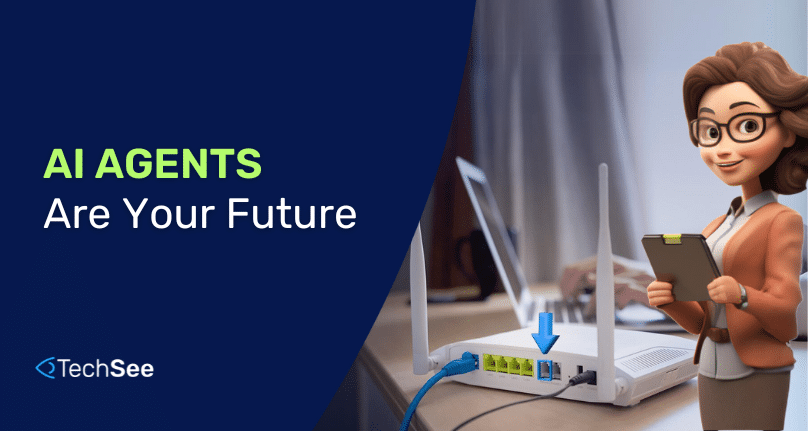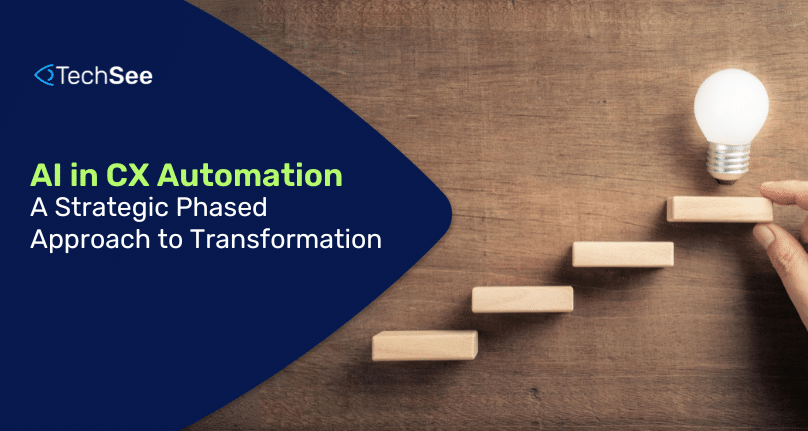Contents
The initial promise of artificial intelligence was intriguing: machines capable of augmenting human tasks, enhancing productivity, and optimizing operations. As we stand on the cusp of a new era, the real breakthrough for AI lies not in merely augmenting our existing staff but in fully automated AI agents. AI agents will free valuable resources from mundane tasks. This allows critical staff to focus on strategic tasks, ushering in a new era of productivity and efficiency.
This shift from aiding humans to acting independently represents a move from incremental gains to substantial transformation, unlocking previously unattainable possibilities.
The Limitations of Augmentation
For years, AI has augmented human capabilities across various sectors—be it NLP to understand customer sentiment in CX, AI for healthcare and diagnostics, large-scale automated manufacturing, or others. These applications aimed to make human tasks easier and more efficient.
However, the limitations of augmentation are becoming increasingly apparent. Augmentation still largely depends on human intervention, which introduces the potential for oversight, delays, staffing shortages, human error, and more. Moreover, human-augmentation systems often struggle to handle peak operational volumes since their dependence on humans prevents them from reaching the true scale that full automation AI agents would enable.
Most importantly, today’s augmentation technologies deliver only incremental ROI improvements. Automating a service call summary will save contact center agents some time, but these gains are minuscule compared to the savings of fully autonomous service.
The Shift To Full Automation Is Here
So, what exactly does full CX automation entail? AI agents can complete tasks independently or with minimal supervision without requiring substantial human intervention.
It can be helpful to compare AI agents to self-driving cars. Nearly all of today’s driver assistance solutions require human oversight. Adaptive cruise control and lane-keeping assistance augment the driver already in the vehicle. These early-stage technologies cannot replace the driver or fundamentally change the economics of car ownership. More advanced stages of autonomous vehicles require very little (if any) human intervention. This AI automation is a far more lucrative and disruptive opportunity.
Automotive leaders treat driver assistance as a step towards fully autonomous driving to achieve full self-driving capabilities. This approach should also be considered in autonomous service and CX. Agent assistants and copilots are great tools, but they must be designed and implemented to push the organization closer to the end goal—AI agents.
In enterprise service and CX, AI agents are not just tools capable of performing specific tasks to assist human agents but competent automated agents in their own right. These AI agents reduce hold times and improve productivity without compromising service or CX quality. Like today’s “self-driving vehicle” solutions, many AI agent solutions integrate human supervision and seamless escalation to a human expert as needed. Over time, as systems become more robust, the need for human supervision and escalation will shift.
To reach the goal of fully autonomous AI agents, we must approach AI augmentation as a step towards full automation rather than the end goal.
Moving from Incremental Gains to Substantial Transformation
In H1 2024, most AI implementations in CX primarily focused on incremental efficiency gains. Agent copilots helped reduce the need for manual service summaries and improved average handling times (AHT) and even first-call resolution rates. While these enhancements are valuable, they fall short of transformative change or AI’s true impact potential.
The real breakthrough lies in CX and service automation, not just augmentation. These automation solutions represent a quantum leap forward. By automating common and complex tasks and interactions, businesses can fundamentally restructure their processes and resource allocations and, most importantly, dramatically improve their customer experience.
In a world with incredibly powerful AI, there is no reason why a customer should have to wait on hold, struggle through setup or onboarding, or even technical troubleshooting. Today’s hybrid AI solutions leverage generative AI, multimodal AI, visual AI, knowledge graphs, and more to deliver AI automation that works.
The Real-World Impact of AI Agents
Numerous real-world case studies illustrate the transformative potential of full automation, especially in fields like enterprise CX, where it can quickly scale to meet the demands of some of the largest global customer bases.
The world’s leading telecom operators, like Verizon and Vodafone, have remarkable success stories in leveraging AI agents across the customer lifecycle. eCommerce leaders like Amazon utilize fully automated systems to handle common customer inquiries at scale, eliminating the need for human agents in many routine interactions.
The impact on these organizations has been remarkable. Our internal studies show dramatic improvements in customer satisfaction, self-service success rates, contact center performance, and field service performance. This adds up to tens, if not hundreds, of millions of dollars in annual savings.
AI agent deployment can be quite complex. Success demands a robust solution design that utilizes the right AI for each step.
A few years ago, we were approached by a large cable television provider. Their customers needed help to set up their new set-top boxes. This resulted in high call volumes and field service dispatches. After trying multiple solutions (YouTube explainers, chatbots, etc), they learned that many users needed visual guidance through the setup process. We deployed a multimodal AI via their smartphone’s camera and browser. This AI identified each cable and port and used AR to guide users through the setup. With over 80% of customers now completing their own self-setup, customer satisfaction improved. Furthermore, they could scale their new set-top box rollout without increasing support overhead, substantially improving their revenues.
These examples demonstrate that AI Agents are a more than a theoretical concept, they are a practical solution. AI Agents deliver measurable outcomes: more efficient resource utilization, financial savings, and better customer experiences.
Implementing AI Agents: Steps and Considerations
Transitioning from augmented AI systems to fully automated solutions is a strategic process that requires careful planning.
Phased rollouts start by learning from existing processes and resources, automating common tasks, and then gradually move towards more complex processes. This approach allows organizations to manage risk and ensure a smooth and successful implementation of AI agents.
Cultural and organizational fit is another crucial factor. Ensure that all stakeholders are aligned, prepared, and ready to embrace the transition. Align cultural values and organizational goals with the technological shift towards full automation. Training and upskilling employees to work alongside and manage automated systems can foster a positive and adaptive organizational culture.
Technology integration plays a vital role in the successful deployment of full automation. Seamless integration with existing systems and platforms, such as Customer Relationship Management (CRM) tools, ensures smooth operations and great customer experience.
Conclusion
As we look towards the future, it’s evident that the next frontier for AI is full automation. While augmented AI has delivered notable benefits, the move to autonomous solutions will provide AI’s true impact on the enterprise. AI agents offer a path to unparalleled operational efficiency, cost savings, and improved customer experiences.
The real breakthrough lies in embracing AI’s complete potential. This demands moving beyond human augmentation and implementing intelligent systems capable of reshaping processes and scaling amazing customer experiences. Decision-makers must recognize the urgency and potential of investing in such technologies, turning today’s investments into tomorrow’s impact. These innovators will not only stay competitive but lead the charge in an increasingly automated world.
To learn more about Sophie AI’s Agent Assistant and AI Agents, please schedule your complimentary consultation today.






